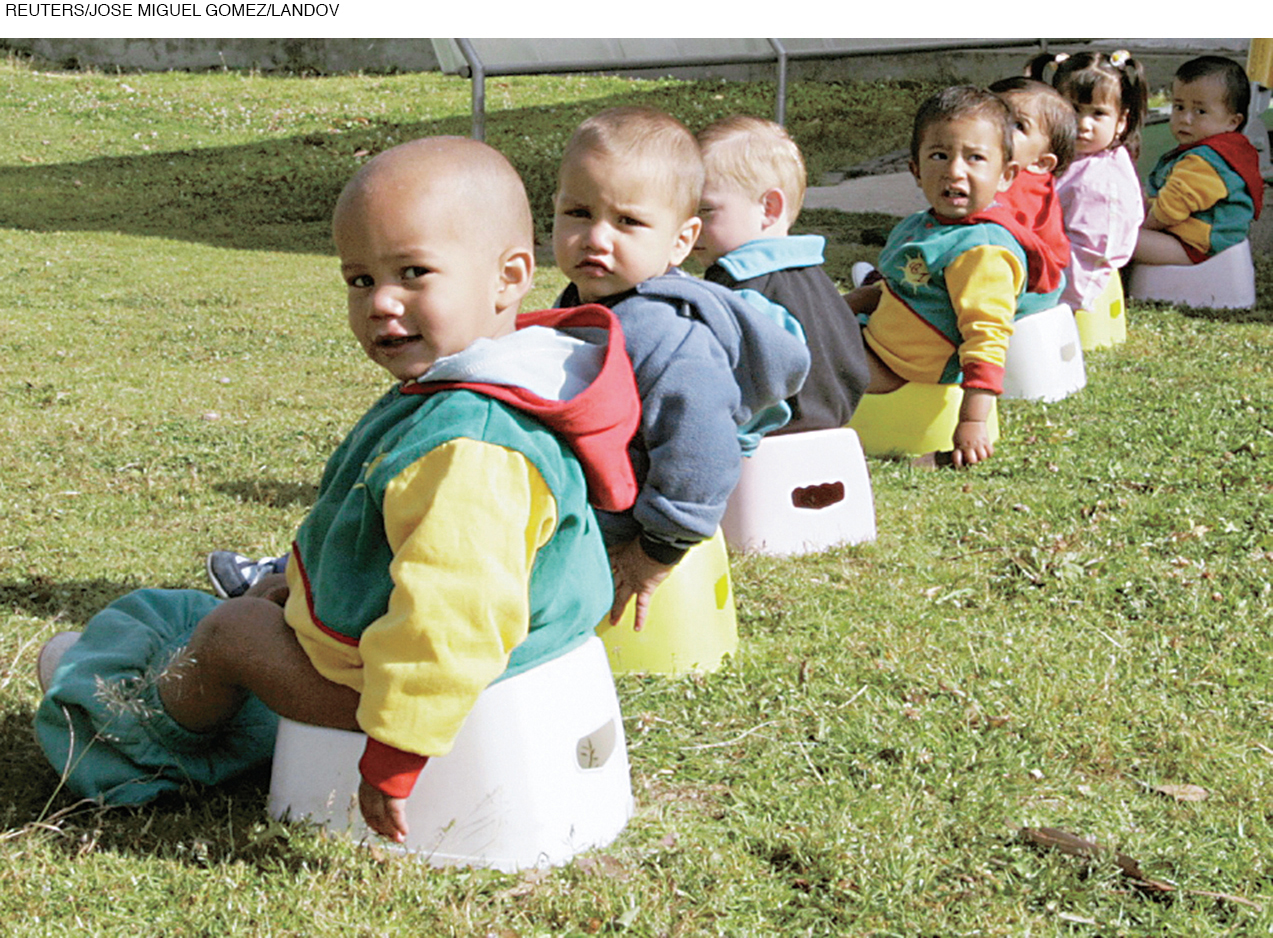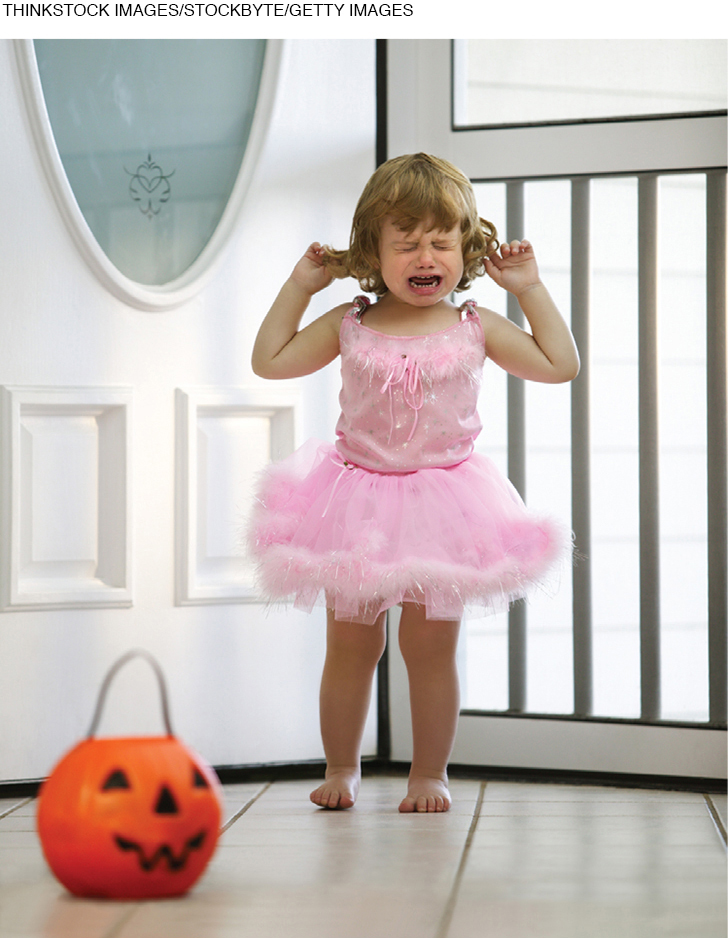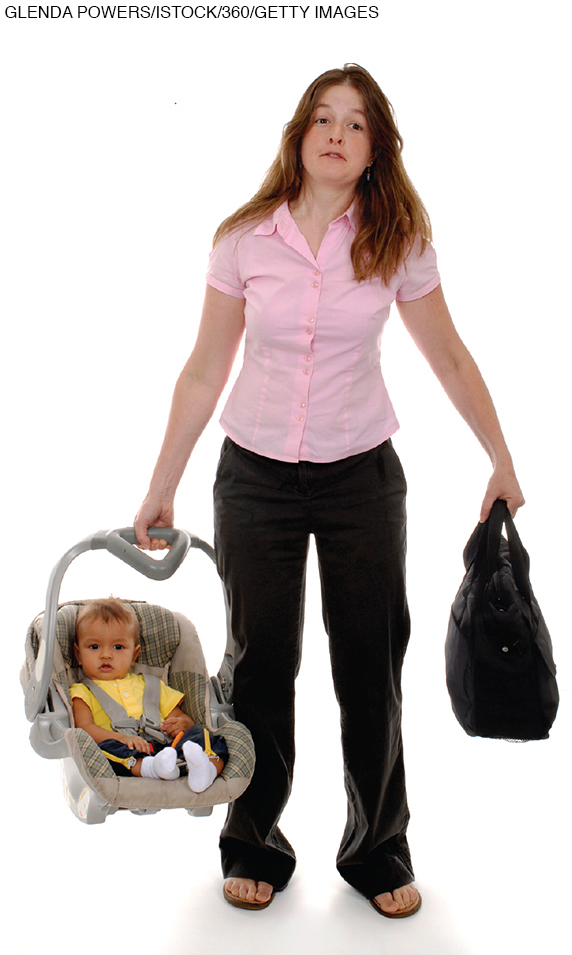Theories of Infant Psychosocial Development
Video: Theories of Emotional Development in Infancy and Toddlerhood summarizes the theories of personality development described in this section.
We focus now on ideas regarding infant development from three theories first mentioned in Chapter 1—psychoanalytic, behaviorist, and cognitive. Highlighting these three does not imply that other theories are irrelevant to infancy. In fact, one theory (attachment theory) has just been explained. Another theory, evolutionary theory, has been instrumental in describing allocare, which is crucial for infant development. However, psychoanalytic, behaviorist, and cognitive theories are now explained because each has explicit predictions regarding infant emotions.
Psychoanalytic Theory
Psychoanalytic theory connects biological and social growth. Sigmund Freud and Erik Erikson each described two distinct stages of early development, one in the first year and one beginning in the second.
151
FREUD: ORAL AND ANAL STAGES According to Freud (1935/1989, 2001), the first year of life is the oral stage, so named because the mouth is the young infant’s primary source of gratification. In the second year, with the anal stage, pleasure comes from the anus—
Freud believed that the oral and anal stages are fraught with potential conflicts. If a mother frustrates her infant’s urge to suck—
Similarly, if toilet training is overly strict or if it begins too early, then the toddler’s refusal—

trust versus mistrust
Erikson’s first crisis of psychosocial development. Infants learn basic trust if the world is a secure place where their basic needs (for food, comfort, attention, and so on) are met.
ERIKSON: TRUST AND AUTONOMY According to Erikson, the first crisis of life is trust versus mistrust, when infants learn whether or not the world can be trusted to satisfy basic needs. Babies feel secure when food and comfort are provided with “consistency, continuity, and sameness of experience” (Erikson, 1993, p. 247). If social interaction inspires trust, the child (later the adult) confidently explores the social world.
autonomy versus shame and doubt
Erikson’s second crisis of psychosocial development. Toddlers either succeed or fail in gaining a sense of self-
The second crisis is autonomy versus shame and doubt, beginning at about 18 months, when self-
Erikson was aware of cultural variations. He knew that mistrust and shame could be destructive or not, depending on local norms and expectations.
For example, Westerners expect toddlers to go through the stubborn and defiant “terrible twos”; that is a sign of the urge for autonomy. Parents in some other places expect toddlers to be obedient. Those parents use shame to control misbehavior.
Cultural pressures are conveyed to children. For example, a study of children found the Japanese highest in shame, the Koreans highest in guilt, and the U.S. children highest in pride (Furukawa et al., 2012). Not surprisingly, U.S. children are less fearful but also less obedient.
Behaviorism
From the perspective of behaviorism, emotions and personality are molded as parents reinforce or punish a child. Behaviorists believe that parents who respond joyously to every glimmer of a grin will have children with a sunny disposition. The opposite is also true, according to one of the early behaviorists:
Failure to bring up a happy child, a well-
[Watson, 1928, pp. 7, 45]
152

social learning
The acquisition of behavior patterns by observing the behavior of others.
Later behaviorists recognized that infants’ behavior also has an element of social learning, as infants learn from other people. You already saw an example, social referencing. Social learning occurs throughout life, as Bandura and many others demonstrated. Sensitive parents are able to teach because infants are eager to learn from them, as in this example.
Kevin is a very active, outgoing person who loves to try new things. Today he takes his 11-
[Lerner & Dombro, 2004, p. 42]
A more general example of social learning is that toddlers express emotions in various ways—
Parents often unwittingly encourage traits in their children. Should parents carry infants most of the time, or will that spoil them? Should babies have many toys, or will that make them too materialistic?
proximal parenting
Caregiving practices that involve being physically close to the baby, with frequent holding and touching.
distal parenting
Caregiving practices that involve remaining distant from the baby, providing toys, food, and face-
Answers to these questions refer to the distinction between proximal parenting (being physically close to a baby, often holding and touching) and distal parenting (keeping some distance—
Every parental action is influenced by whatever assumptions the culture holds. According to behaviorism, each action reinforces a lesson that the baby learns, in this case about people and objects.
Cognitive Theory

Cognitive theory holds that thoughts determine a person’s perspective. Early experiences are important because beliefs, perceptions, and memories make them so, not because they are buried in the unconscious (psychoanalytic theory) or burned into the brain’s patterns (behaviorism).
153
working model
In cognitive theory, a set of assumptions that the individual uses to organize perceptions and experiences. For example, a person might assume that other people are trustworthy and be surprised if someone lies, cheats, or betrays a confidence.
According to many cognitive theorists, early experiences help infants develop a working model, which is a set of assumptions that becomes a frame of reference for later life (S. Johnson et al., 2010). It is a “model” because early relationships form a prototype, or blueprint; it is “working” because it is a work in progress, not fixed or final.
Ideally, infants develop “a working model of the self as lovable, and competent” because the parents are “emotionally available, loving, and supportive of their mastery efforts” (Harter, 2012, p. 12). However, reality does not always conform to this ideal. A 1-
The crucial idea, according to cognitive theory, is that an infant’s early experiences themselves are not necessarily pivotal, but the interpretation of those experiences is (Olson & Dweck, 2009). Children may misinterpret their experiences, or parents may offer inaccurate explanations, and these form ideas that affect later thinking and behavior.
In this way, working models formed in childhood echo lifelong. A hopeful message from cognitive theory is that people can rethink and reorganize their thoughts, developing new models. Our mistrustful girl might marry a faithful and loving man and gradually develop a new working model. The form of psychotherapy that seems most successful at the moment is called cognitive-
WHAT HAVE YOU LEARNED?
Question 4.28
1. What might happen if a person is stuck in the oral stage?
This person may eat or drink to excess, chew tobacco, bite their nails, or talk excessively.
Question 4.29
2. What might happen if a person is stuck in the anal stage?
This person may develop an anal personality, seeking self-
Question 4.30
3. How might the crisis of “trust versus mistrust” affect later life?
If positive social interactions in infancy inspire trust, later in life the child or adult will likely explore the social world with confidence. The inverse would be true for infants who develop mistrust at this stage; they would lack confidence in their engagement with the world and assume that their basic needs cannot be met.
Question 4.31
4. How might the crisis of “autonomy versus shame and doubt” affect later life?
Toddlers want autonomy over their own actions and bodies. If this does not develop, then they feel ashamed and doubtful, and this may result in an adult who is suspicious and pessimistic or easily shamed. Children who develop autonomy will likely develop into confident adults.
Question 4.32
5. How do behaviorists explain the development of emotions and personality?
Behaviorists believe a child’s emotions and personality are molded as parents reinforce or punish a child. In addition, behaviorists believe that infants absorb information from the people around them through social learning.
Question 4.33
6. What emotional reactions might children learn from watching their parents?
Children may express emotions in various ways—
Question 4.34
7. How would a child develop a working model about expressing emotions?
According to cognitive theory, the crucial idea is that an infant’s early experiences themselves are not necessarily pivotal, but the interpretation of those experiences is. Children may misinterpret their experiences, or parents may offer inaccurate explanations, and these form ideas that affect later thinking and behavior. For example, a 1-
Question 4.35
8. What would change an adult’s working model?
A hopeful message from cognitive theory is that people can rethink and reorganize their thoughts, developing new models. A mistrustful girl might marry a faithful and loving man and gradually develop a new working model. Or, a person may assume that other people are trustworthy and be surprised if someone lies or betrays a confidence.